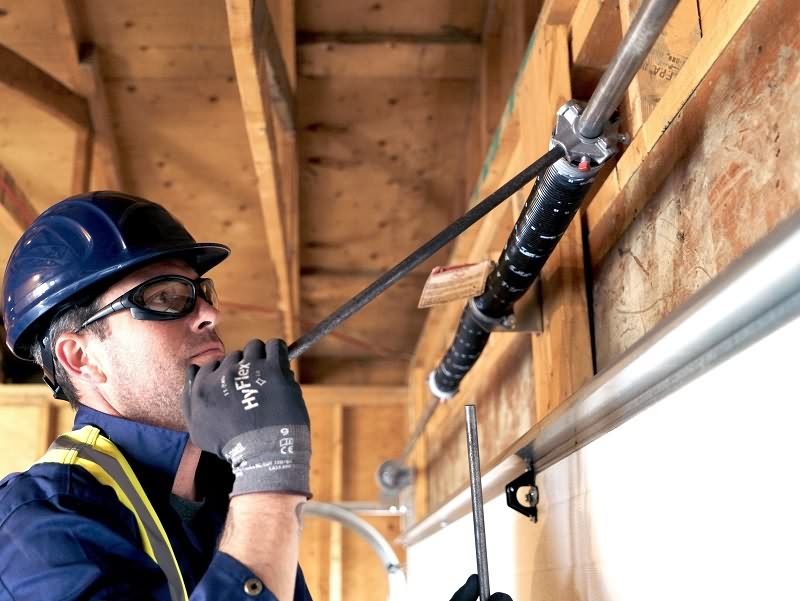Your garage door springs make all of the hard work when it open and close. Garage door springs breaking is a big problem for many homeowners who do not know how garage door springs work, what causes them to break, or how to fix them – all of which is valuable knowledge to have.
1. Wear and Tear
Up to now, the biggest reason for garage door spring failure is simple wear and tear. The average, properly installed torsion springs will last for approximately 10,000 cycles. A cycle being the garage door going up and coming back down to close. Even if you were to only leave and come back once throughout the entire day, that still equates to 2 cycles per day or 730 cycles in a year. That being said a garage door spring would only last for about 13 ½ years. However, most people open and close the door many times throughout the entire day, running many cycles, shortening that life span to far less than 13 ½ years. It is even possible to go through 10,000 cycles in about 1-2 years!
2. Rust Buildup
When rust forms on the garage door springs, it can cause the springs to easily break and the lifespan of them to be shortened. Rust increases the amount of friction on the coils while it moves back and forth. Addition, the corrosion on the spring will weaken the coils and lead to failure more quickly. You can prevent spring breakage due to rust by spraying down the coil with a silicone-based lubricant three or four times a year, which can greatly assist in keeping it well lubricated and extend its life expectancy.
3. Poor Maintenance
Wear and tear can eventually cause the garage door springs to break down, but proper maintenance can prolong the lifespan of the springs. The first thing to do is spray down the coil with lubricant three or four times a year. Additionally, you should check the garage door balance every season. Normally most garage doors have spring failure issues in the winter, so checking it more frequently during that time is recommended.
How to Check the Garage Door Balance
(1) Pull the emergency release cord (it has a red handle) to place the door in manual mode.
(2) Lift the garage door up halfway and then let go of it. If the door stays still without moving, then the springs are properly working. If the door falls down a bit, then the springs are beginning to wear down and should be fixed soon.
4. Incorrect Springs Used
When using the incorrect spring wire size, ID or length, your garage door springs will likely fail sooner than later. Correctly maintained and constructed garage doors should have 2 torsion springs, one on each side. Some garage door installers use one long torsion spring across the whole garage door, which is acceptable for smaller or lighter doors, but not the average one. It is better to use 2 springs to share the whole weight load of opening and closing the garage door, because single one not only shorten the life cycle but will cause heavy damage when failure occurs.
We strongly suggest broken garage door spring repairs be performed by professional technicians, who possess the proper training and tools to complete the job safety.
As Garage Door Spring manufacturer and supplier, we offer a wide selection of Garage Door Torsion Springs in 1.75” and 2” Diameters in multiple wire sizes ranging from 0.192, 0.207, 0.218, 0.225, 0.234, 0.243, 0.250, 0.262 to 0.272. All Bestar Garage Door Torsion Springs are manufactured from high-tensile, oil-tempered spring wire, meeting ASTM A229 and lasting nearly 15,000 cycles.
We can produce Torsion Springs for most Garage Door Manufactures and Suppliers, including but limited to: CHI Garage Doors, Clopay Garage Doors, Amarr Garage Doors, Raynor Garage Doors and Wayne Dalton Garage Doors.
Post time: Mar-12-2022

